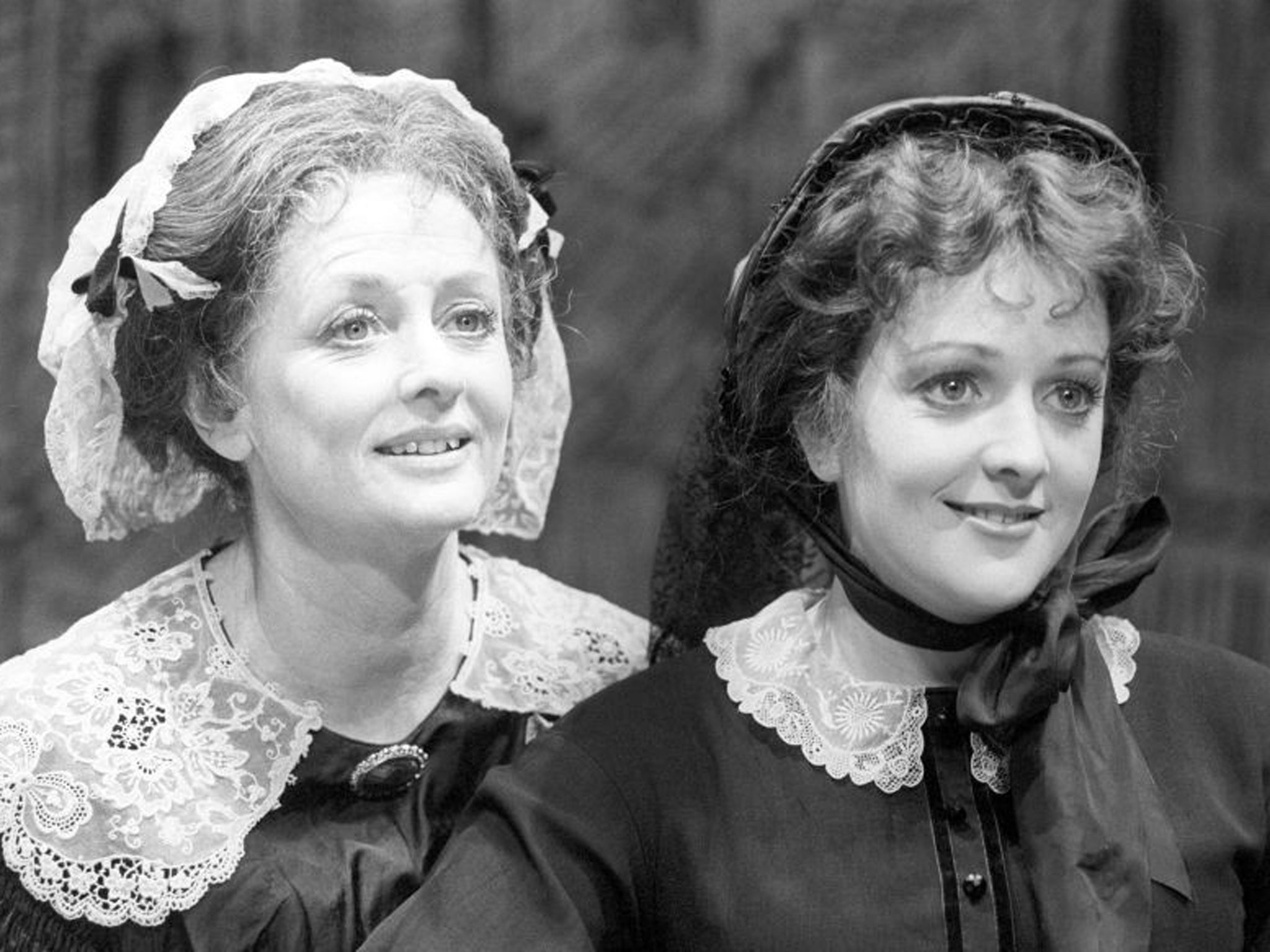Elspet Gray: Theatre and TV actress who starred in the many farces staged by her husband, Brian Rix
Having played a lady of the manor in Catweazle, she took on the role for real when Rix was knighted

On and off stage, Elspet Gray presented good humour to the world. Possessing distinctive red hair and high cheekbones, she was a sympathetic foil, often cast as wife to her real-life husband Brian Rix during his 15-year run of farces at the Whitehall Theatre.
Rix believed that “a farce has to be played in one certain way”, and it was a method with which Gray was in accord. Due to personal involvement, she was also as one with him in representing the disability charity Mencap.
She was born to a Scots Presbyterian couple, inheriting red hair from her father, a representative of Lloyds Bank in Pakistan; her mother, also called Elspet but known to everyone as Elsie, had a degree in languages, but was a colonial wife. Rix termed them “two victims of the British Raj”. At RADA, Gray won the Lord Lurgan Prize for best diction, and made her debut in 1947 at the Grand, Leeds in Edward, My Son, co-written by and starring Robert Morley, with Peggy Ashcroft.
When casting for repertory in Margate in 1949, Rix, then a young actor-manager with his Viking Theatre Company, recalled encountering “the most gorgeous redhead... she was wearing a green tweed costume, which set off her eyes and hair to perfection.” He offered her the position of assistant stage manager, at four pounds ten shillings a week, at his rep in Bridlington.
On arriving at Bridlington, Rix said – in a scene straight from his later work – that he could only see Gray’s rear end as she stood on a ladder. On jibing, “I’d recognise that face anywhere,” she laughed sarcastically; plunging in deeper, he said, “I feel a bit of an ass standing here,” and she replied, “Now you’re being cheeky.” They married in August that year.
She played a WRAC officer in Reluctant Heroes, a forces farce that became Rix’s first big success, opening in Hastings in 1950, then at the Whitehall, where it ran for four years. In 1951, she gave birth to a daughter, Shelley, diagnosed with what was then termed mongolism, later known as Down’s syndrome. Writing years later, an angry Rix recalled being told by the resident paediatrician to “put her in a home and forget all about her”.
Gray’s television debut was in The Poppenkast (1952), a children’s tale with another future farceur, Leslie Phillips. Following a BBC outside broadcast from the Whitehall of Love in a Mist in 1956, with Rix and Gray as stranded newly-weds, Rix arranged for more productions from the theatre, for which, for the next 16 years, “the BBC would merely pay the bills, put their cameras into the Whitehall, point them in the right direction and that would be that.”
In 1965, Gray was facially disfigured when accidentally hit by Rix’s car, near the couple’s holiday home in Spain. The plastic surgery she immediately underwent proved successful, and she returned to work in another of Rix’s televised farces, To Dorothy a Son, shown on BBC1 on Easter Monday 1966. She took the title role in Madame Louise (1972), one of Rix’s final run of BBC tie-ins, Six with Rix.
From 1961, the couple were often seen collecting at concerts in aid of the Stars Organisation for Spastics, and Gray later became chairman of Mencap’s House Committee, while Rix was the charity’s secretary general from 1980.
Having played a lady of the manor in the second series of Catweazle (LWT, 1971), she took on the role in real life:Rix was awarded a knighthood in 1986 and was created a life peer in 1992.
Gray guested in Fawlty Towers in 1979; twelve years earlier, she and Andrew Sachs had been in Rix’s Theatre of Laughter company at the Garrick, an unsuccessful attempt to establish a farce repertory in the West End. She was Rowan Atkinson’s Flemish mother in The Black Adder (1983), judged unsuccessful at the time and screened less often than its successors, before playing the Brazilian aunt in Charley’s Aunt (Aldwych, 1983), starring Atkinson’s former colleague Griff Rhys Jones.
A Stratford East revival of Dion Boucicault’s The Streets of London (1980), directed by actress Diane Cilento, cast Gray and her daughter, Louisa, as mother and daughter. Gray and Rix were together again in a revival of Dry Rot (Lyric, 1988).
Accompanied by their dog Bastien, Rix said that “we still like each other and that must be a bonus in any marriage.” He read The Times, she read The Guardian and was “at heart a Liberal.” He survives her with their children; their son Jamie, named for her father, is a leading television comedy producer.
Elspet Gray, actress; born Inverness 12 April 1929; married 1949 Brian Rix (two sons, one daughter, one daughter deceased); died London 18 February 2013.
Join our commenting forum
Join thought-provoking conversations, follow other Independent readers and see their replies
Comments